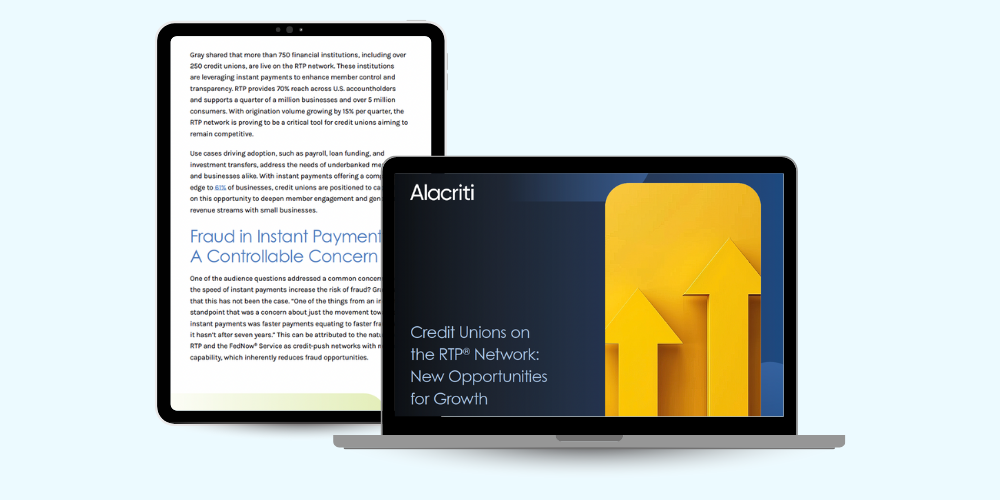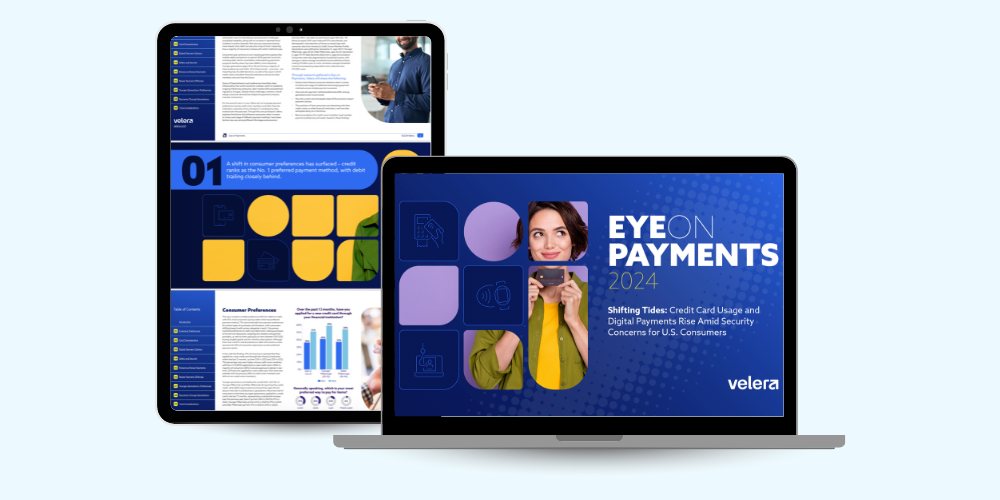In the latest episode of The Alacriti Payments Podcast, host Saman Kazmi sat down with Erik Van Bramer, Senior Vice President and Head of National Sales and Customer Relations for Federal Reserve Financial Services to discuss the progress of the FedNow® Service over one year post-launch.
Here are five key takeaways from the podcast:
1. Rapid adoption of the FedNow Service
The FedNow Service has seen an incredible uptake since its inception. Initially launched with 35 financial institutions, this service has now expanded to include over 900 institutions, ranging from major banks to small credit unions. This rapid growth is not only a testament to the service’s design but also reflects a widespread recognition of the need for more efficient payment systems.
Bramer noted, "We surpassed the 900 financial institution mark as we crept up to our one-year anniversary, and as of today, that number continues to grow."
This impressive uptake includes a mix of the largest banks in the country and smaller credit unions. Bramer emphasized the diversity of these early adopters: "One of the beauties of that is it's not just 900 community banks, it’s 900 financial institutions representing a wide array of players."
Despite this success, Bramer acknowledged that challenges remain, particularly in expanding the service’s sender capabilities. While many institutions are currently set up to receive payments, more work is needed to push adoption further, particularly among corporate clients and those utilizing third-party service providers.
2. Emerging use cases surprising industry experts
While peer-to-peer (P2P) payments were anticipated to be the primary focus, Bramer shared that various unexpected use cases are driving the service’s adoption.
- Digital wallets: The rise of digital wallets enhances convenience and flexibility, allowing consumers to move money between accounts easily.
- Earned wage access: This innovative benefit enables employees to access their wages daily, reflecting a significant shift in employer-employee dynamics.
Bramer noted that while P2P payments were the initial focus, "what we've seen are use cases we weren't even aware of," such as the growing popularity of digital wallets. This allows consumers to easily move money between accounts, fueling unexpected growth. He also highlighted earned wage access (EWA) as a surprising demand driver: "The one that’s probably been the most surprising for me is earned wage access."
Initially linked to independent workers, EWA has now expanded to mainstream employers, offering daily wage access and attracting new accountholders with more flexible banking solutions.
3. Impact on traditional payment rails
While the FedNow Service hasn't caused a dramatic upheaval in traditional payment systems, it is beginning to shift transaction volumes in certain areas. Bramer acknowledged that the overall impact has been relatively modest but highlighted several clear trends:
- Shift in smaller transactions: "We're seeing some $50 wires that were being sent, but people are identifying that this is a much better way to move such a small amount of money." Many smaller transactions that were traditionally processed through wires are now moving through FedNow.
- Impact on ACH payments: There is also a shift away from ACH payments for some use cases. However, this doesn't necessarily reduce the overall volume of payments. Instead, it changes the nature of the transactions being processed.
- Payroll as an example: Employers who switch to same-day payroll for their employees might process fewer ACH transactions, but the volume of instant payments they generate could increase significantly.
In the long term, Bramer hopes to see a more noticeable impact in areas like check payments, particularly for small businesses that are still attached to traditional methods. He remarked, "I think we can really start to make some efficiency improvements and potentially move more transactions out of the check world."
4. Future enhancements and fraud prevention focus
Looking ahead, fraud prevention remains a key focus for the Federal Reserve as it enhances the FedNow Service. Bramer emphasized the need for better fraud detection tools, explaining that the current system allows institutions to set transaction thresholds to manage risk. "We ensured that we had some basic fraud tools, like dollar thresholds and negative lists, but that was really just the beginning."
Future enhancements will include more advanced tools, such as the ability to set different thresholds for various account types, providing greater flexibility. The Federal Reserve is also exploring the use of artificial intelligence (AI) for detecting anomalies in payment behavior. These advancements are crucial for ensuring a secure environment as instant payments become more widespread.
5. Advice for financial institutions yet to connect
For financial institutions that have not yet connected to the FedNow Service, Bramer's advice is clear:
- Don’t wait: "Don’t wait for your customers to come to you asking for instant payments; they may never." He emphasized that consumer and corporate expectations are evolving quickly, and institutions that delay adopting instant payments risk falling behind.
- Risk of losing customers: The longer institutions wait, the more they risk losing customers to competitors or alternative payment solutions like digital wallets.
- Proactive approach: Bramer urged institutions to be proactive by partnering with trusted vendors to help ease the transition. "Finding a good partner is pivotal," he stated, encouraging banks and credit unions to rely on experienced service providers to navigate the complexities of adopting instant payments.
- Instant payments are here to stay: He reinforced that instant payments will remain a key driver of growth for the financial industry: "Any institution sitting on the sidelines risks being overtaken by the competition," Bramer concluded.
For more expert insights, listen to the full episode, Instant Payments and Innovation: Lessons from The Alacriti Podcast with The Fed on The Alacriti Payments Podcast.
Alacriti’s centralized payment platform, Orbipay Payments Hub, provides innovation opportunities and the ability to make smart routing decisions at the financial institution to meet their individual needs. Financial institutions can take full ownership of their payments and control their evolution with ACH, Wire, TCH’s RTP® network, Visa Direct, and the FedNow® Service, all on one cloud-based platform. To speak with an Alacriti payments expert, please contact us at (908) 791-2916 or info@alacriti.com








